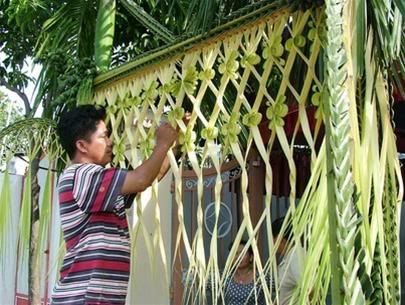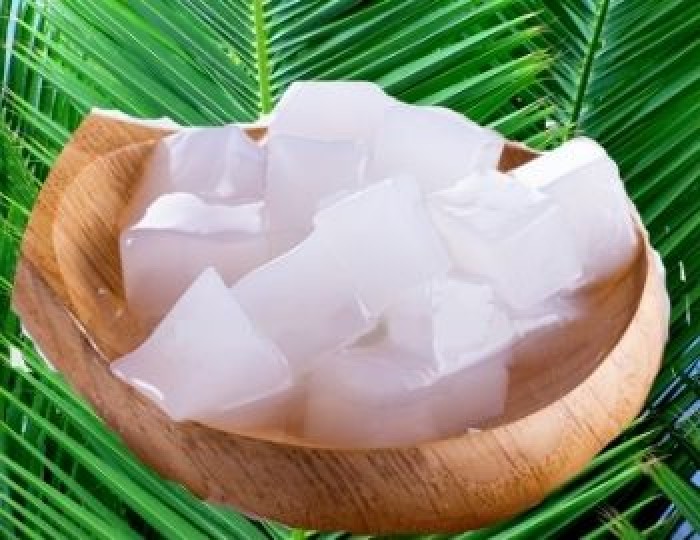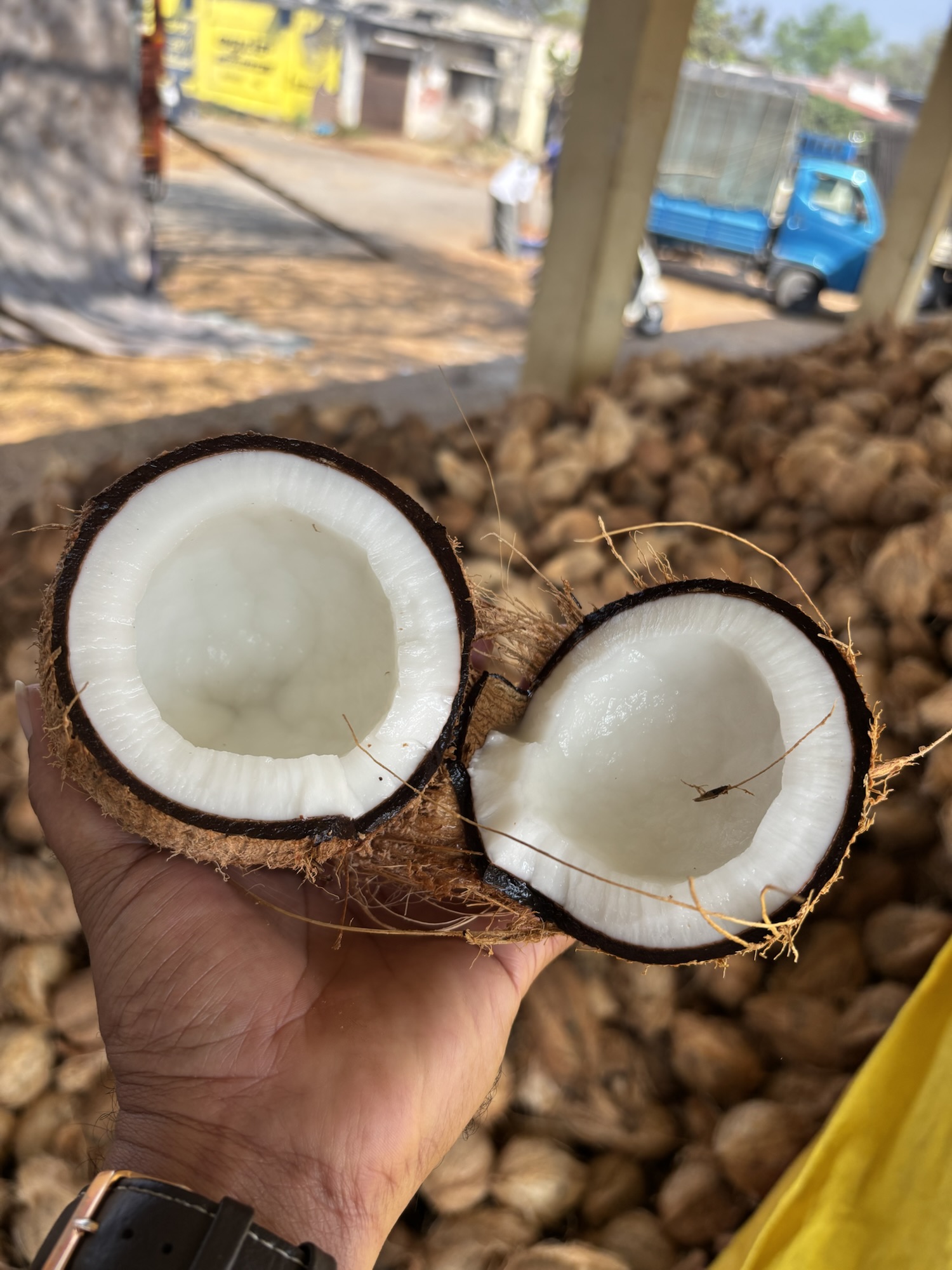
The stiff midribs of coconut leaves are used for making brooms in India, Indonesia (sapu lidi), Malaysia, the Maldives, and the Philippines (walis tingting). The green of the leaves (lamina) is stripped away, leaving the veins (long, thin, woodlike strips) which are tied together to form a broom or brush. A long handle made from some other wood may be inserted into the base of the bundle and used as a two-handed broom.
The leaves also provide material for baskets that can draw well water and for roofing thatch; they can be woven into mats, cooking skewers, and kindling arrows as well. Leaves are also woven into small piuches that are filled with rice and cooked to make pusô and ketupat.
Dried coconut leaves can be burned to ash, which can be harvested for lime. In India, the woven coconut leaves are used to build wedding marquees, especially in the states of Kerala, Karnataka, and Tamil Nadu.
The leaves are used for thatching houses, or for decorating climbing frames and meeting rooms in Cambodia, where the plant is known as dôô:ng.
content : https://en.wikipedia.org/wiki/Coconut#Leaves



